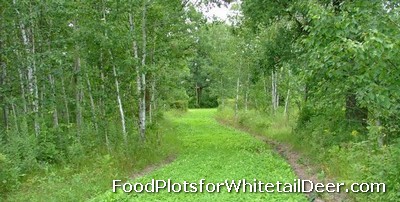There are several factors to consider when thinking about food plots in Texas for whitetail deer and turkey. For starters, always keep the objective of the food plot in mind. Will it be used as true supplement for the deer found on the property, a forage plot? Or, will it be used as an attractant, a hunting plot? Although there are food plots developed for doves, quail, and waterfowl, most plots in Texas are planted for deer and turkey. Let’s take a look at some of the things to consider when developing a food plot.
There is the obvious; the food plot that a hunter plants should be adapted to to the area and grow successfully, providing additional forage for animals found in the area. Let’s face it, Texas is a big state so a food plot seed mix planted in one area may not be suitable for others. It is important to use a food plot mix that will work in your area. And yes, use a mix. The reason is because even with a good mix of seeds, some will do better than others based on site-specific soil and water conditions. Do not plant a single species plot!

A key factor for food plots in Texas is site selection. If you are planning on hunting over a food plot, then the recommendation would be to plant a smaller hunting plot rather than a larger forage plot. It would also be a smart move to plant these food plots for hunting near bedding areas and travel corridors. Hunting plots should be about 1/2 to 1 1/2 acres in size. Plots planted just for turkey or whitetail deer forage should be located in the middle of your property and be three or more acres in size.
When it comes to food plots in Texas, fall and winter plots are much more popular. Not only because this is when deer hunting season occurs, but also because cool season plots are typically much more successful. Although the importance of spring food plots should not be discounted. When it comes to perennial plots, especially those used in the spring, look rich clay soils surrounded by trees to shade the plots during Texas’ hot, dry summer months. Food plots can work in sandy soil, but go for areas with loam and clay soils if they are available.
Site preparation is important for a food plot that grows to its potential and provides forage to for the wildlife species that you are interested in. One of the easiest practices to ensure a successful food plot is a soil test. This test identifies soil deficiencies and offers guidance on how to fertilize your plot area. Like preparing a field for a row crop, food plots in Texas need proper seed bed preparation. If you can, avoid skimping here. There are some food plot mixes where you can just throw and go, but broadcasting like that does require a higher seeding rate than if the seeds were drilled into the soil or dragged to cover.
When it comes to providing supplemental forage for deer, turkey and other wildlife species, food plots are very economical. It’s also practical to plant food plots just about anywhere in Texas, except for maybe far West Texas, unless irrigation is available. Keep in mind that food plots are really used twofold, for hunting for providing additional forage, so know your objectives before you start. Not only will turkey and deer food plots provide forage, attract, and hold wildlife on your property, but they will also give you a satisfying sense of accomplish when they are done right.